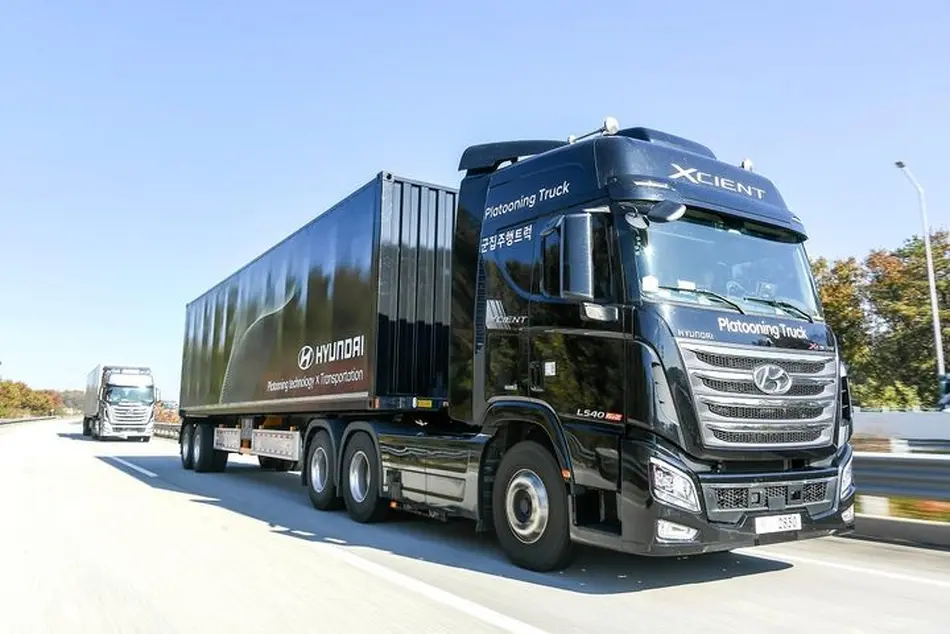Hyundai Completes its First Successful Truck Platooning Trial
Hyundai Motor Company successfully conducted its first platooning test involving two commercial trucks on the Yeoju Smart Highway in South Korea, while replicating real-world conditions.

Hyundai Motor Company successfully conducted its first platooning test involving two commercial trucks on the Yeoju Smart Highway in South Korea, while replicating real-world conditions.
The Yeoju Smart Highway is a nearly 5-mile long testbed within the country’s central region expressway established by the Korean government for the development of autonomous driving research that is designed to replicate the conditions of an actual highway.
Hyundai Motor conducted the trial using two trailer-connected Xcient heavy-duty trucks.
The demonstration successfully featured vehicles platooning while under different conditions, including vehicles cutting in and out of the platoon and with simultaneous emergency braking. The test also made use of vehicle to vehicle communication tech. The tests were conducted at 37 mph for safety purposes.
“We are confident that our industry leading autonomous driving technology in commercial vehicles showcased in this platooning truck demonstration will lead into a revolutionary paradigm shift in the freight and logistics industry,” said Jihan Ryu, head of Hyundai Motor’s Commercial Vehicle Electronics Control Engineering Group. “We will strive to create constructive synergy by sharing our knowhow and experiences of developing autonomous driving technology between commercial vehicle and passenger vehicle sectors to expedite level-5 autonomous driving technology.”
While platooning, the vehicles maintained a gap of around 55 feet with real-time fine tuning based on the leading vehicle’s acceleration and deceleration. When cutoff by a vehicle, the trucks automatically extended the gap to a minimum of 82 feet.
The V2V communication system used by both trucks in the demonstration showcased how real-time information sharing between platooning vehicles can improve control over acceleration and deceleration and incorporate advanced driver assistance system information from sensors like cameras and radar.
The technology also included real-time frontal video sharing, which displays videos from the leading vehicle tow the following vehicle so that the driver in the secondary position can see the road ahead.
Hyundai’s goal is to achieve high-level platooning technology that will be able to work with tighter following distances and also implement traffic information for optimized travel in the future.
This demonstration is part of a project initiated by the South Korean Ministry of Land, Infrastructure and Transport (MOLIT). Since 2018, MOLIT has been working to support pioneering efforts for autonomous technology. Along with Hyundai Motor Company, this national project involved government, corporations, and academia.



